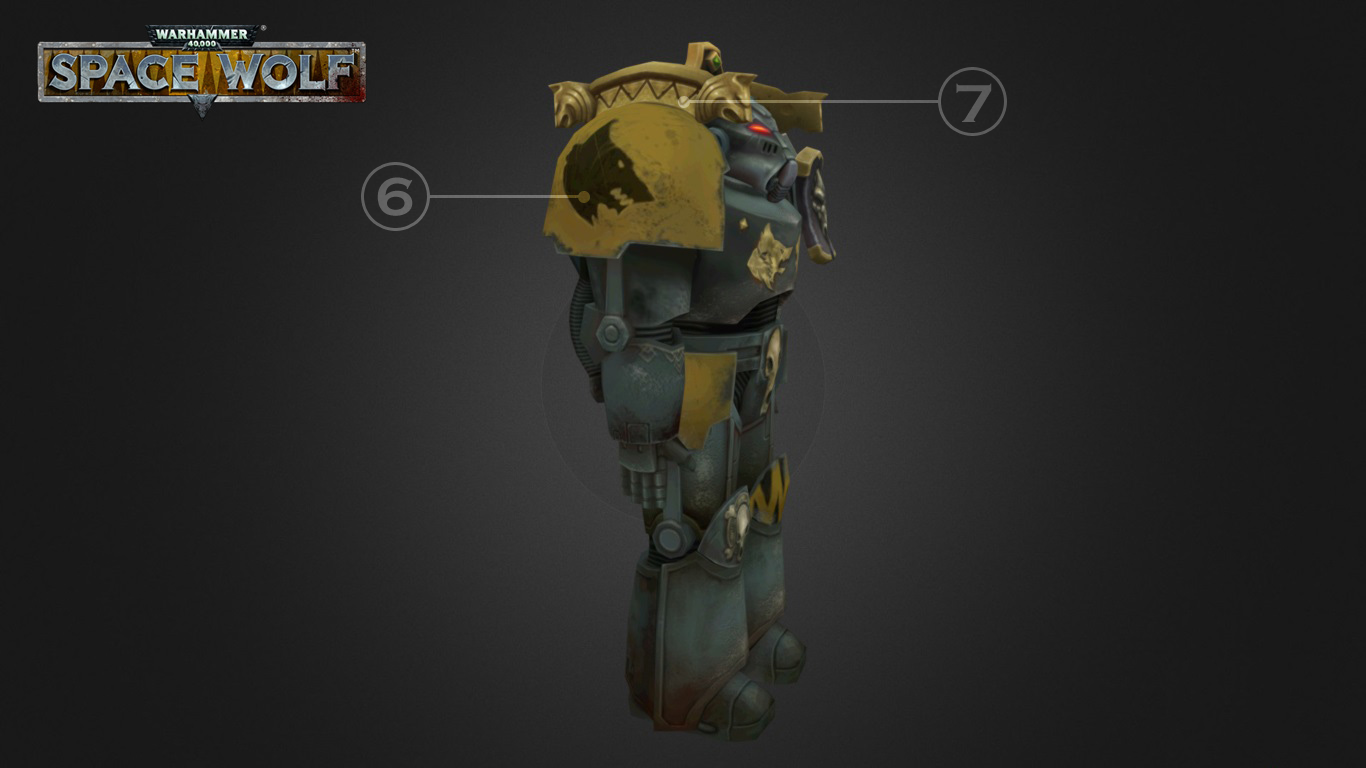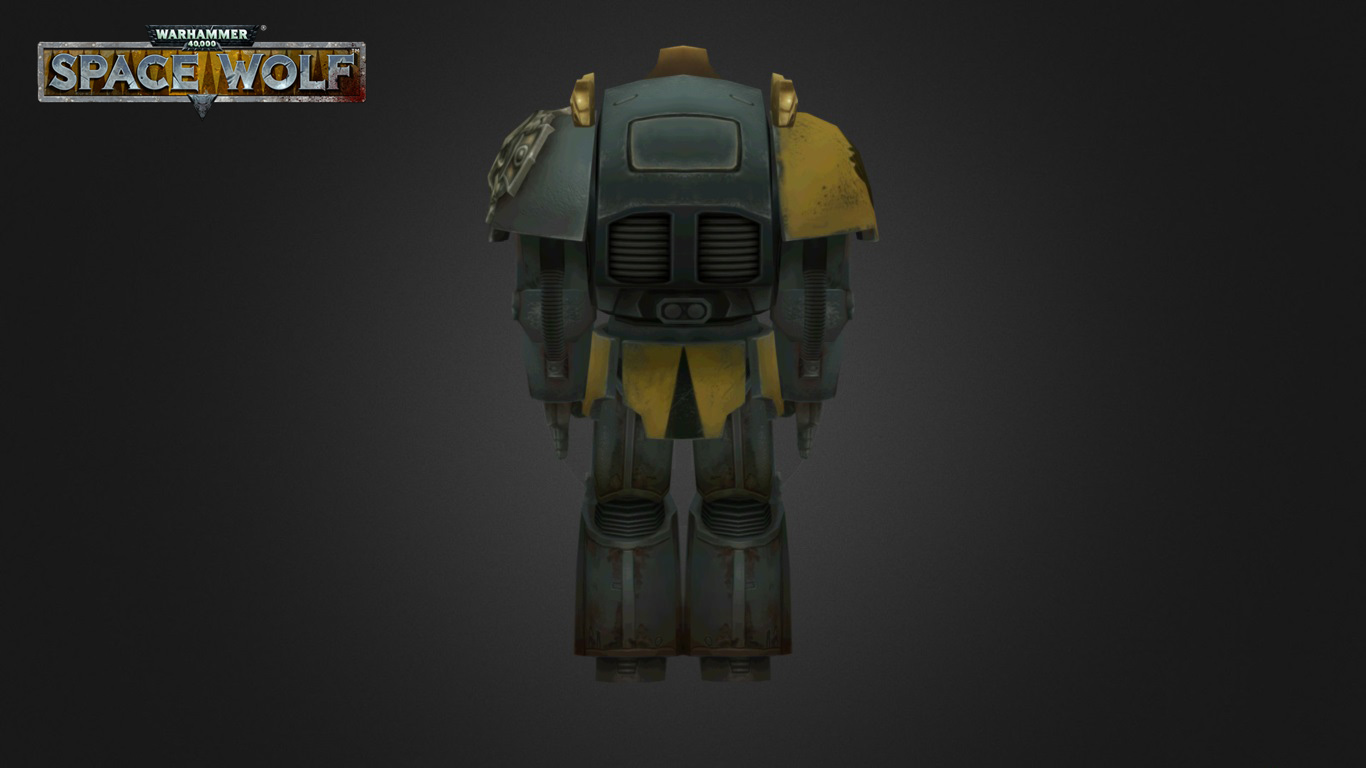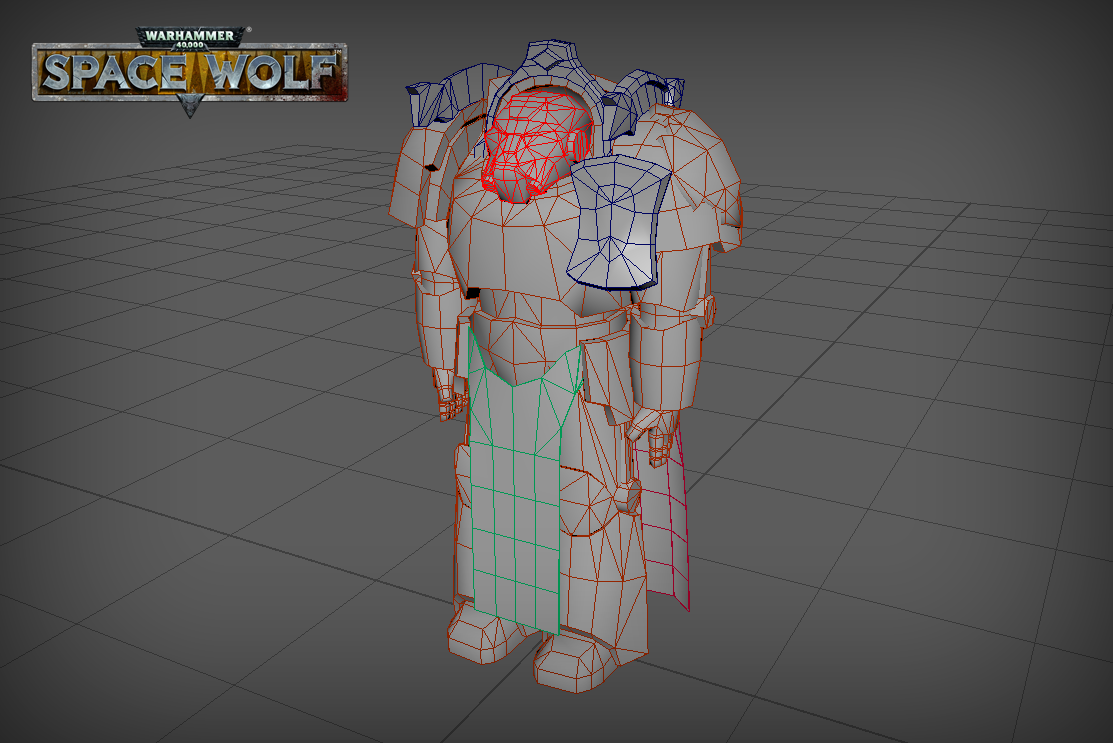Developer Diaries: Experience working with Games Workshop on a Warhammer 40,000 game
What does the work on the content for the game for a popular international brand look like, using the example of Warhammer 40,000: Space Wolf, the company HeroCraft told. We share their material.
The author of the material is Anastasia Skachko, PR manager of HeroCraft

Anastasia Skachko
Today HeroCraft is the only Russian company that develops a game under the license of Games Workshop. It’s about Warhammer 40,000: Space Wolf, a turn-based strategy with elements of KKI.
We released the first version of the game in October 2014 on iOS. In July 2015, the game was released on Google Play. Most recently, in February of this year, the PC version of the project was released as part of early access on Steam.
I want to talk about how we are working on the project. In this article we will talk about working on the visual component of a mobile game.
Game development in the Warhammer 40,000 universe
Warhammer 40,000 is a desktop wargame with an extensive set of rules. Its action takes place in a dark techno-fantasy universe, whose history is not inferior in complexity to the rules of the game. Wargame has been developed and published since 1987 by the British company Games Workshop.
The peculiarity of the franchise is that every (or almost every) detail of the world, whether it’s about the appearance of fighters, the features of worlds or the hierarchy of fictional political systems, is prescribed by the authors of the universe.
For example, the appearance of fighters – even if you just take only their armor – is an extremely complex system with stories, many varieties and subtleties. Each element of the armor carries a semantic load.
For this reason, when working on a game in the universe, each element of the game is subject to mandatory approval from Games Workshop.
Description of a Space Marine in Terminator armor
What attention to detail the company requires can be clearly seen by taking apart, for example, the armor of a space marine of the Order of Space Wolves, for whom you can play Warhammer 40,000: Space Wolf.
In our game, there are three options for Space Marines’ equipment: Power Armor, Scout armor and Terminator armor. I will tell you about the work on the example of the Terminator.
Terminators are elite space Marines of the Imperium in powerful armor, which combines the best properties of power armor and dreadnoughts technologies. It is heavily armored, isolated from any external influences and has an individually built-in armament armor.

Terminator Armor from Warhammer 40,000: Space Wolf
Black and yellow is the color of the Wolf Guard, the personal guard of a company commander. Initially, on Fenris (the homeworld of the Space Wolves), black and yellow were considered the colors of the aristocracy and respected members of the tribes.
The triangle pattern on the left knee pad (1) is the mark of the pack in which the Space Wolf spent the main part of the service before joining the Wolf Guard. In this case, they symbolize the jaws of a wolf.
The right knee pad (2) is the symbol of the Wolf Lord Ragnar the Black–Maned tactical group (the Wolf Lord of the company that appears in the game).
The two heads on the breastplate (3) are a protective symbol that depicts the Fenrisian wolves Freki and Geri, the eternal companions of Leman Russ, the Primarch – founder of the Legion, whose “descendant” is the Order of Space Wolves.
The skulls on the belt and shield (4) are marks of military glory. Since both are made using elements of the skeleton and bones, it means they were issued, among other things, for getting wounded in battle.

Terminator Armor from Warhammer 40,000: Space Wolf
The composition on the left shoulder pad (5) is a special symbol of the operational tactical group of Ragnar Chernogrivy. It is combined with the Crux Terminatus – a special award, an order issued for merit and allowing you to wear terminator armor.

Terminator Armor from Warhammer 40,000: Space Wolf
The wolf’s head on the right shoulder pad (6) is a symbol of the company and personally of the Wolf Lord Ragnar the Black–Maned. The requirement for all members of the Wolf Guard to replace the symbol of their pack (which is usually placed on the left shoulder pad of a Space Marine) with the symbol of the Wolf Lord is optional, but desirable. In this case, in addition to the replacement, there was also a transfer – the symbol of the pack was on the left knee pad.
The crests behind the shoulder pads (7) symbolize Morkai, a two-headed spirit, guide and guardian of the dead, occupying a central role in Fenrisian mythology.

Terminator Armor from Warhammer 40,000: Space Wolf
Working on models for Warhammer 40,000: Space Wolf
Work on content – due to the need to strictly follow guidelines – begins with the collection of reference materials.
Materials are collected from official sources; developers also look at products made under license, but of course, the materials developed directly by Games Workshop are paramount.
The latter, by the way, sends us boxes with miniatures so that we can get acquainted with the references first-hand.

Miniatures of Space Wolves as references
We don’t do sketches, because all the elements of the armor have already been invented, they only need to be transferred to digital form.
Approximately 3500 to 7000 triangles are allocated for all models in our game.
Why such a spread?
Those characters that the player sees all the time (the main character and his companions) are made with more detail: for example, the terminator with all the body kits consists of about 7000 triangles. Those models that the player sees less (representatives of the Forces of Chaos) consist of about 3,500 triangles.
We do not use multi-polygonal models because they are resource-intensive, only low-polygonal ones are used.

Dmitry Maksyura, the head of the Warhammer 40,000: Space Wolf project, is well versed in the universe. At the modeling stage, he himself can point out to the modeler possible errors, shortcomings or deviations from the original source. If everything is done well, then the artists begin to create a texture.
To do this, a UV scan is done – these are the coordinates of the texture. After the scan is ready, proceed to drawing textures manually. The mobile version uses two types of textures: diffuse map (color) and specular (glare map). The source code is drawn in the size of 2048×2048 and then reduced to 1024×1024.

What does a model with and without a speculator look like:

After working on the texture, the model begins to animate, add effects and sounds.
In addition to graphic materials, a legend is collected (a literary and functional description of the character and what he can do). Most performers usually have enough of this information, but sometimes they have to additionally communicate with the copyright holder to clarify some small, previously undisclosed details.
All these materials are attached to the terms of reference.
There is always a mandatory point in the task, which says that the deviation from the style and design should be negotiated in advance.
Due to the fact that the team carefully and scrupulously studies materials and works with references, as a rule, there are no situations when something needs to be redone, due to the fact that some elements are made in contradiction with the main sources of information about the universe.
Waste from the canon when working with Warhammer 40,000
Despite the strict rules when working on content for games in the Warhammer 40,000 universe, not everyone always follows them.
During the development of the upcoming content update for the mobile version (“The Saga of the Great Awakening”) there was a funny case.
On one of the locations, the emblem of the Adeptus Mechanicus organization hangs in several places, which is a gear with a skull inside.
In our original version, the gear had 12 teeth. During the approval process, Games Workshop drew attention to the fact that the Adeptus Mechanicus emblem can have a number of teeth only a multiple of 8.
For this reason, the emblem model had to be redesigned accordingly. In the final version, it already has 16 teeth.

Screenshot of one of the locations of the “Saga of the Great Awakening” campaign
Later it turned out that this rule does not always apply to gears. Gears with 12 teeth are quite common in the illustrations. The copyright holders explain this by the fact that 16-gear gears often do not fit into the position assigned to them in the image, and 8-gear gears do not look so impressive due to the rare location of the teeth. We left 16 in the game.
***
As a brief conclusion, I would like to note that working with Games Workshop does not bear the imprint of the heaviness of approvals and reporting, which one might think about looking back at the scale of the game universe. After all, we, no less than the Games Workshop team, understand the importance and significance of the details in creating a new chapter in the history of the world of Warhammer 40,000.